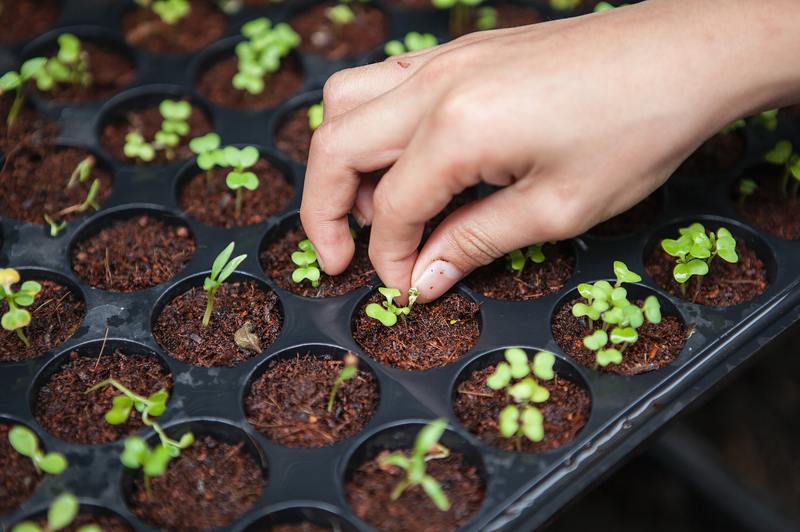Are you having a pest problem on your farm? Here’s a guide on how can we prevent pests in organic farming.
Integrated Pest Management (IPM) is a pest control method that can prevent pests in organic farming. It combines all suitable pest control techniques in a compatible manner to protect crops from the damage done by insect pests, plant pathogens, weeds, and other harmful organisms while minimizing the usage of hazardous pesticides.

One of the most fundamental ways to practice pest management in organic farming is using appropriate cropping techniques, biological control, and natural pesticides extracted from plants or animals. There are cultural practices including mechanic cultivation, mulching, and flaming to control weed presence, which is the main problem for organic growers.
Utilizing IPM
Organic farming systems rely on ecologically-based cultural and biological pest management methods and exclude synthetic chemicals in crop production. Under organic farming systems, farm management methods prevent pest populations from reaching economically damaging levels.
For example, in organic farming systems, crop rotation is widely used. Crop rotation refers to planting different crops in the same area to combat pests, optimize nutrients in the soil, and improve soil health.
The term integrated pertains to a coordinated pest management strategy using many tools and practices compatible with one another. The goal of IPM is to keep the population of pests below levels that result in economic damage.
In the 1970s, pesticide use on farmlands raised human health and environmental concerns. In response to the issue, agricultural scientists looked into ways to control pests more effectively with less pesticide use which soon became Integrated Pest Management (IPM).
Organic farm owners need to utilize practical pest management tools that include monitoring tools, cultural practices, biological control, and any other feasible preventative options for pest control. Organic growers should not rely on pesticides as they are costly and pose severe environmental risks.
IPM Steps In Organic Farming
Pest management in organic farming uses a holistic approach that depends on the ecological processes and biodiversity in the agroecosystem. The strategies and principles of Integrated Pest Management (IPM) match with organic farming systems.
A successful IPM program in organic farming has the following components:
- Accurately identifying pests
- Monitoring crops for pests
- Developing economic thresholds
- Implementing integrated pest control tactics
Identification And Monitoring Of Crop Pests
Identifying insect pests and their natural enemies is essential in any pest management program. Using a field guide and consulting a professional may help identify the pests on your farm.
Unlike insect pests, plant pathogens like bacteria, fungi, viruses, and nematodes are hard to determine because they require a registered laboratory diagnosis. However, unlike plant pathogens, it is easy to distinguish signs of insect damage and plant disease symptoms, and you can identify weeds using field guides.
Monitoring refers to the inspection of field crops for pests, including insects, nematodes, pathogens, and weeds, to determine the level of damage. It is an early warning system that can help evaluate the effectiveness of the control methods.
It’s part of IPM to develop economic thresholds for pest management. Economic thresholds are a helpful tool that can help decide the necessary pest control action when the pest population exceeds a specific limit.
To know further details about IPM, you may want to see this article to know what are the benefits of IPM.
Common Tactics Used For Pest Prevention In Organic Farming
Pest management methods used in organic farming focus on three management strategies: prevention, monitoring, and suppression. Each control tactic has different procedures for preventing and suppressing pest populations.
Shown below are the different control tactics put into practice in IPM.
1. Cultural pest control
One of the goals of cultural control is to disrupt the stable relationship between the pest and the host, making the pest less likely to grow, survive or reproduce. Cultural control in organic farming includes:
- Crop rotation
- Proper timing of planting and harvesting
- Selection of crop plant varieties
- Use of trap crops
- Irrigation management
The cultural practices mentioned are more preventive than curative and thus require advanced planning. When using these cultural practices, it is crucial to be mindful of the environmental aspect of the field because some cultural control techniques may be impractical in some contexts.
For example, the practice of tilling to disrupt an insect pests’ life stage may be impractical for a farmer who’s trying to reduce erosion on his field.
2. Mechanical and physical pest control
One of the simplest mechanical and physical control methods is handpicking insects and pulling weeds. This method can work effectively in areas where pests are visible.
Physical or mechanical disruption of pests includes hoeing, mowing, flaming, soil solarization, and tilling or cultivation. Using objects to prevent insect pests from reaching crops is expected in mechanical and physical control.
Examples of the things used are row covers, protective nets, and sticky traps that can catch insects like aphids, whiteflies, and leafminer adults.
3. Biological control
Biological methods include the use of beneficial organisms to reduce insect pests populations. Biological control has three categories:
- Importation or classical biocontrol introduces pests’ natural enemies to locations where they don’t usually live.
- Augmentation refers to the release of natural enemies in large numbers.
- Conservation involves the conservation of existing natural enemies in the environment.
In using pests’ natural enemies, organic growers don’t have to consider using potent pesticides like synthetic pyrethroids to tackle pest problems.
Do you want more information about biocontrol? You may visit this article to identify what is biocontrol.
Conclusion
How can we prevent pests in organic farming? We can control pests’ populations in organic agriculture by implementing the process of Integrated Pest Management (IPM).
IPM integrates many control tactics like cultural control, mechanical and physical control, and biocontrol to combat pests in an organic farming system. The pests are unlikely to survive if multiple tactics are used instead of one, making IPM an efficient pest control method.
